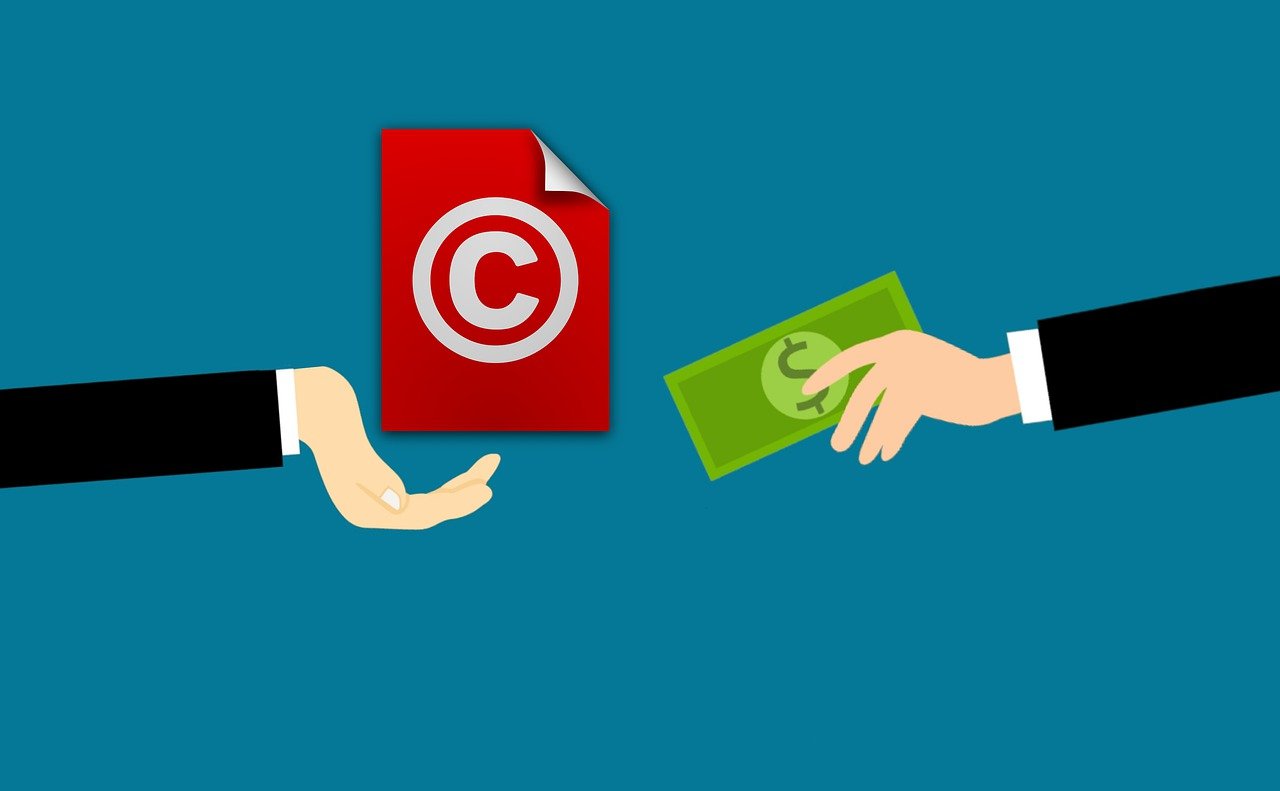In the rapidly evolving business environment of 2025, protecting your innovative ideas has become more crucial and challenging than ever. With digital communication and remote collaborations at an all-time high, the risk of business ideas being misappropriated is significant. Entrepreneurs face a paradox: to grow their ventures, they must share their ideas with investors, partners, and customers, yet every disclosure carries the risk of theft. This article navigates the critical strategies entrepreneurs and startups can adopt to shield their business concepts effectively. From robust legal tools such as patents, trademarks, and non-disclosure agreements to practical measures like employee vetting and limited information sharing, safeguarding intellectual property is a multi-layered process. Understanding internal threats alongside external risks, leveraging digital platforms prudently, and engaging legal expertise at every stage will ensure that your ideas remain your competitive edge. Join us as we explore concrete actions and industry insights to keep your business idea safe in a world brimming with innovation and competition.
How to Legally Protect Your Business Idea From Being Stolen: Essential Measures
Legal protection forms the backbone of protecting any valuable business idea. Ensuring your intellectual property (IP) rights are firmly established prevents unauthorized usage and provides recourse in case of disputes. Understanding the spectrum of legal tools available in 2025—from patents to trademarks—and when to apply them is fundamental for any entrepreneur.
Patents: Securing Technological Innovations
A patent grants exclusive rights to inventors over their inventions, preventing others from making, using, or selling the innovation without permission. Patents are particularly valuable for technological products, manufacturing methods, or chemical compositions. With patent costs ranging from a few thousand dollars to upwards of $15,000 depending on complexity, startups can strategically file a provisional patent to gain temporary protection while further developing their product. Provisional patents serve as a placeholder for 12 months, marking your invention as “patent pending” and providing a critical window for market introduction or investor discussions.
For example, a biotechnology startup developing a novel medical device may first secure a provisional patent through resources from IP Australia or the United States Patent and Trademark Office (USPTO), after which they can seek investment and continue with the non-provisional patent application. Websites like LegalZoom and Rocket Lawyer offer streamlined services to help entrepreneurs file patents efficiently.
Trademarks: Building and Protecting Branding Identity
Trademarks protect names, logos, slogans, or other symbols that distinguish your goods or services from competitors. Registering a trademark through platforms such as Trademarkia or Trademarks411 ensures that your brand identity is legally secured and makes it easier to take action against imitators. It’s especially important for consumer-facing businesses where brand recognition drives customer loyalty.
Consider a fashion company that registers a unique logo combining artistic flair and brand ethos through UpCounsel’s legal network. This not only protects the company’s market presence but also provides credibility and legal backing if infringement arises.
Copyrights and Trade Secrets: Shielding Creative Works and Confidential Information
While copyrights automatically protect original creative works such as content, graphics, or software as soon as they are fixed in a tangible medium, formal registration can offer added legal benefits. Meanwhile, trade secrets safeguard proprietary processes, formulas, or customer lists, relying on confidentiality rather than public registration.
For instance, a software development firm may copyright its source code and simultaneously treat its unique algorithm as a trade secret, employing internal security measures and NDAs to prevent leaks.
Non-Disclosure Agreements (NDAs) and Non-Compete Clauses
NDAs are critical when discussing your business ideas with employees, contractors, or potential investors. These agreements legally bind parties not to disclose or use your confidential information improperly. Combined with non-compete clauses, firms can further restrict the ability of former employees or partners from engaging in businesses that directly compete or profit from the stolen information.
- Ensure every employee, vendor, and potential partner signs an NDA before any sensitive discussions.
- Consult legal experts, possibly through platforms like LegalShield or Nolo, to draft enforceable agreements tailored to your industry.
- Regularly update these agreements to reflect changes in business scope and legal requirements.
| Protection Type | Purpose | Duration | Cost Range (USD) | Best For |
|---|---|---|---|---|
| Provisional Patent | Temporary invention protection | 12 months | $100 – $300 (filing fee) | Early-stage inventions |
| Non-Provisional Patent | Full invention protection | Up to 20 years | $1,000 – $15,000+ | Innovative products and processes |
| Trademark | Brand names, logos, slogans | Renewable every 10 years | $250 – $350 per class | Brand identity protection |
| Copyright | Original creative works | Life of author + 70 years | $45 – $65 | Artistic & software content |
For deeper insights, the Patent Trademark Blog offers up-to-date articles and case studies on protecting intellectual property effectively.

Implementing Legal Protection: Case Study
Consider Jane, an entrepreneur with a novel eco-friendly packaging idea. Before pitching her concept to investors, Jane used LegalShield to draft an NDA agreement, protecting her disclosure. She then secured a provisional patent through USPTO services, facilitated on platforms like Rocket Lawyer. Jane also registered her brand name as a trademark via Trademarkia, securing her unique identity. By keeping detailed documentation and limiting information shared during pitches, she effectively warded off potential idea theft, illustrating the power of a multi-layered legal defense.
Strategies to Protect Your Business Idea From Internal Threats
Internal breaches often pose hidden risks to business concepts. Employees or partners with access to confidential material can become unintentional or malicious sources of leaks. Recognizing and mitigating these vulnerabilities strengthens business resilience.
Conduct Thorough Employee Background Checks
Background screening helps identify potential risks connected to past behaviors or legal issues. Using expert services to verify work history and criminal records can preemptively weed out candidates who might jeopardize your business secrets.
- Engage reliable background check firms for all prospective employees.
- Implement periodic reviews on sensitive personnel to update the risk profile.
- Maintain confidentiality during screening to protect privacy rights.
Require Strong Legal Agreements Including NDAs and Non-Competes
Ensure everyone joining your team signs NDAs covering trade secrets and intellectual property. Non-compete agreements should restrict employees from joining competitors or using delicate information post-employment. These agreements act as deterrents.
Offer Incentives to Foster Loyalty and Reduce Theft Risks
Employee satisfaction and motivation can prevent insider theft. Providing competitive benefits, bonuses, and recognition makes team members feel valued and less likely to sell out corporate secrets. A positive culture that emphasizes shared success enhances protection.
Limit Access and Control Information Flow
Not all employees require full access to sensitive data. Restrict confidential information to essential personnel with clear usage protocols. Secure data storage utilizing hack-resistant measures and encrypted systems reduces vulnerability.
| Internal Protection Measures | Benefits | Implementation Tips |
|---|---|---|
| Background Checks | Identify security risks early | Hire professional services; regularly update |
| Legal Agreements (NDAs, Non-Competes) | Legally bind employees to confidentiality | Use expert legal platforms like UpCounsel for drafting |
| Employee Incentives | Boost loyalty and motivation | Personalize rewards and acknowledge contributions |
| Access Controls | Limit exposure to critical data | Encrypt data and monitor information usage |
For practical tips on internal safeguards, this LinkedIn guide provides actionable insights for team management and idea protection.

How To Handle Breaches or Suspicious Behavior Internally
If you suspect an insider leak, act promptly. Use internal audits and digital forensics to track unauthorized disclosures. Consult legal counsel immediately and consider injunctions to prevent further misuse. The law firms listed on platforms such as Nolo and UpCounsel specialize in intellectual property disputes and can be instrumental during such crises.
Effective Ways to Safeguard Your Business Idea When Sharing with External Parties
Sharing your business concept beyond your inner circle is often unavoidable when seeking funding, partnerships, or manufacturing support. However, protecting your idea during these exchanges is crucial to prevent external theft.
Utilize Non-Disclosure and Non-Compete Agreements with Partners and Suppliers
Before disclosing sensitive information, ensure suppliers and partners sign legally binding NDAs and non-compete clauses. This safeguards your trade secrets and legally restricts third parties from sharing or exploiting your ideas.
- Prepare tailored NDAs to cover specific partnership scopes.
- Leverage services like LegalZoom or Rocket Lawyer to draft comprehensive agreements quickly.
- Regularly enforce and update agreements as business relationships evolve.
Avoid Full Disclosure During Investor Pitches
While investors require sufficient information to make informed decisions, sharing every detail upfront can risk exposure. Limit disclosures to essential elements, and use NDAs whenever possible. Be cautious with investors insisting on full disclosure before engagement; such red flags often signal risk.
Choose the Right Legal Experts for Guidance
Engaging experienced legal professionals, accessible via networks like UpCounsel or Nolo, ensures tailored advice on IP protection aligned with your business context. Expert counsel can optimize the use of patents, trademarks, copyrights, NDAs, and trade secrets to suit your needs.
| External Safeguard Strategies | Why They Matter | Best Practices |
|---|---|---|
| NDAs and Non-Compete Agreements | Prevent unauthorized sharing and exploitation | Customize agreements per party and purpose |
| Controlled Disclosure | Limit exposure during negotiations | Share minimal, necessary details only |
| Legal Counsel Support | Obtain expert guidance and enforcement help | Consult reputable lawyers via LegalShield or UpCounsel |
For additional guidance on external safeguards, see this in-depth article on legal clarity and protection methods.

How to Protect Your Business Idea
Hover or tap the cards below to discover key IP protections for your business idea.
Best Practices for Documenting and Monitoring Your Business Idea
Documentation is a powerful tool when defending your intellectual property in legal disputes. Maintaining meticulous records of your idea’s evolution and all disclosures boosts your chances of securing rightful ownership in court.
Keeping a Development Log and Design Archives
Track every step of your idea’s growth—from sketches and prototypes to business plans and pitch notes. Timestamped records provide incontrovertible evidence of originality and priority.
- Maintain a dedicated logbook or digital journal to capture brainstorming sessions.
- Save drafts, emails, and communications with partners and investors.
- Use services that offer secure cloud storage with audit trails for sensitive documents.
Record Agreements and Disclosures
Archive copies of NDAs, non-compete contracts, work-for-hire agreements, and any correspondence about intellectual property rights. Clearly identified and signed documents are key in enforcement.
Monitoring the Marketplace for Infringements
Utilize brand protection software like RedPoints to track unauthorized use or imitation of your trademarks and patents on global platforms. Early detection allows swift legal action to prevent damage.
| Documentation Aspect | Reason | Tools and Best Practices |
|---|---|---|
| Idea Development Logs | Proves originality and timeline | Digital journals, timestamped sketches, cloud storage services |
| Legal Agreements Archiving | Validates confidentiality and rights | Organized filing systems, e-signature platforms |
| Market Surveillance | Detects unauthorized use | RedPoints or similar brand protection software, alerts |
To delve further into strategic documentation and monitoring, explore articles on UpCounsel and insightful posts at the Patent Trademark Blog.
Common Pitfalls and How to Avoid Losing Your Business Idea
Even the most innovative entrepreneurs fall prey to avoidable mistakes that leave their ideas exposed. Awareness and proactive strategies are vital to sidestep these pitfalls.
- Over-sharing Without Agreements: Disclosing your full idea publicly or without NDAs surrenders your protection rights.
- Delaying Legal Protection: Waiting too long to file patents or trademarks increases vulnerability to copycats.
- Relying on Verbal Promises: Oral agreements are difficult to enforce; always require written contracts.
- Assuming NDAs Offer Complete Security: NDAs help but are insufficient alone; layering protections is essential.
- Ignoring Internal Threats: Employees can be sources of leaks or theft; internal safeguards are crucial.
Taking early action not only protects but also enhances your business’s credibility and valuation during funding or partnership negotiations. Companies like LegalZoom and Rocket Lawyer provide affordable legal tools designed to assist startups in navigating these hurdles.
Frequently Asked Questions About Protecting Business Ideas
What is the best way to protect an idea without applying for a patent?
Using a combination of NDAs, work-for-hire agreements, trademarks, and trade secrets can effectively safeguard your idea. These methods are cost-effective and provide strong legal backing without the lengthy patent process.
How can I prevent employees from stealing my business idea?
Require employees to sign NDAs and non-compete agreements, implement strict access controls, and offer incentives to foster loyalty and reduce the temptation of theft.
Can I sell my idea without having a patent?
Yes, but it’s essential to have legal protections like NDAs to prevent parties from exploiting the idea without compensation. Most companies prefer to invest in businesses with IP protections.
How long does the patent process typically take?
The patent process generally lasts between one to three years. Provisional patents provide 12 months of temporary protection to allow time for product development and investments.
What should I do if my business idea is stolen?
If theft occurs, gather documentation proving your ownership, consult an IP attorney, and consider legal actions such as injunctions or lawsuits to stop unauthorized use and seek damages.


